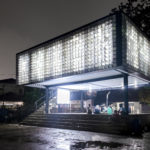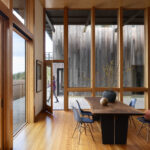“We always want to conquer space.”
Wolf Prix was in a robust mood as he took architectural filmmakers Spirit of Space on a tour of the Musée des Confluences in Lyon, France. Reflecting on the success of a building that has welcomed an estimated one million visitors since it opened a year ago, the founder of avant-garde architectural firm Coop Himmelb(l)au extolled the value of designing “mind-expanding machines” for the public through cultural architecture. Listen to his intriguing insights on Lyon’s latest landmark in this short film:
Musee des Confluences, with Wolf Prix from Spirit of Space
Defending the project’s budget, Prix made some particularly pointed statements pertaining to the spending of public money, advocating for governments to place greater emphasis on cultural and educational spending rather than on the vast sums often saved for military purposes. “This museum only costs two military bombers, air fighters,” remarked the architect. “The problem in criticizing why this museum costs so much is that, [unlike] the air fighters, this museum cannot kill people.”

The outspoken architect also touched on evidence suggesting that complex or richly detailed architecture benefits people’s mental states: “If you are living in boring spaces, your brain doesn’t work in a creative way. This is what science finds out. The more enriched the spaces you are walking in, living in, studying in, even sleeping in, the more it pushes your brain to be creative. We call that atmosphere.”
Musee des Confluences, COOP HIMMELB(L)AU from Spirit of Space
Prix encouraged designers to look to inspiration from beyond the realms of architecture in order to generate remarkable concepts for the built environment. “If you only think in architectural terms, only architecture will come out,” exclaimed the Austrian. “We were fascinated by the space suit, by the space helmet, by the Formula 1 racing car, by the music. The tension of the riffs of Keith Richards was the role model for our structure, sometimes. We experimented with mind-expanding machines … All these things were very important. More important than those we drew from Palladio!”

For more images and insight on Coop Himmelb(l)au’s mind-bending odes to Deconstructivism, check out the firm’s in-depth profile in the Architizer database.









